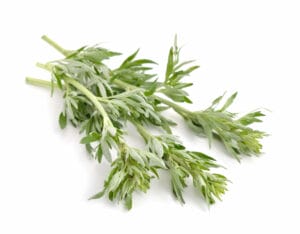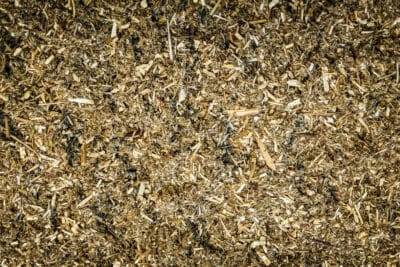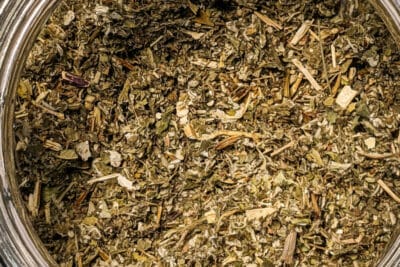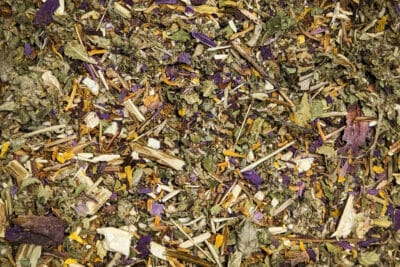Mugwort Guide: What to know
Artemisia vulgaris
Also referred as:
Mugwort
🍃 Texture when dried
Fluffy green leaves with stems
👅 Taste
Earthy taste and smell
❔ Usage
Herbal tea, smoking blends and food flavoring
💨 Smoke
Medium smoke
🗜 Harshness
Smooth
⚡ Effects
Mild relaxation

Table of Contents
Introduction
Mugwort is a versatile herb found across Europe, Asia, and North America. Known for its aromatic qualities and silvery-green leaves, mugwort is often used to make soothing herbal tea or as an addition to smoking blends. With a history rooted in folklore and traditional medicine, this fascinating plant continues to intrigue people today.
Smokably products with Mugwort:
-
 MugwortCAD $8.00 – CAD $12.00
MugwortCAD $8.00 – CAD $12.00 -
 Smokably Original Blend (Red raspberry)CAD $12.00 – CAD $18.00
Smokably Original Blend (Red raspberry)CAD $12.00 – CAD $18.00 -
 Classic Blue Lotus BlendCAD $16.00 – CAD $22.00
Classic Blue Lotus BlendCAD $16.00 – CAD $22.00
Frequently asked questions
Is it common to smoke mugwort?
Yes, absolutely, mugwort is a popular smoking herbs because it is versatile, cheap and a neutral herb.
Many have smoked the leaves of the plant as a natural replacement to tobacco. It can also be blended with traditional tobacco, as well as a variety of other herbs, as it has a neutral flavor and aroma.
Is mugwort smoked on its own or mixed with other herbs?
It can easily be smoked on its own or it can be combined with other herbs. If you intend on smoking it solo, simply grind up the plant’s dried leaves and either roll them in rolling papers or add them to a pipe or bong. Keep in mind that using Mugwort alone in herbal cigarettes can be challenging due to its fluffy texture, which tends to clump together.
You can also mix mugwort with other types of herbs, including tobacco or cannabis, as well as various other smokable herbs, such as mullein, chamomile, peppermint, and lavender. To smoke it with other herbs, simply mix it into whatever it is that you intend on combining it with and smoke the blend how you normally would. You might need to balance mugwort with other herbs.
Mugwort can act both as a base herbs or a supportive herb. It can be versatile in a blend, you might want to use it in amount of 25-40% of your blend.
Can mugwort help you quit smoking?
There is limited scientific evidence to support the claim that mugwort can help quit smoking. However, some people have used herbal smoking blends, which can include mugwort, as an alternative to help reduce their nicotine consumption or address the habitual aspects of smoking. Mugwort can be used as a natural replacement to tobacco. It is nicotine-free, and therefore, it is non-habit forming. This approach may not work for everyone, and it’s essential to research and consider potential risks before using any herbal blend to quit smoking. It’s always a good idea to consult with a healthcare professional for guidance on quitting smoking and using alternative methods.
If you are willing to try herbal tobacco alternatives, we recommend trying mullein, mugwort, raspberry leaves, or our own original blend, which has been crafted to be neutral and easy to smoke.
Why do people enjoy mugwort?
Mugwort has been consumed for centuries – in food, drink and as a smoking herbs – Here are some reasons why you might enjoy it too:
- The compounds in Mugwort are believed to have digestive benefits and may help ease issues like upset stomach and irritable bowel syndrome.
- Mugwort is known to have relaxing properties, and smoking it may help promote relaxation and possibly reduce anxiety.
- Mugwort has a history of use in regulating menstrual cycles in women with irregular periods.
- Mugwort is known for its sedative properties, which may be helpful for individuals who experience insomnia or difficulty sleeping.
- Some of the components in mugwort can produce a hallucinogenic effect when ingested or inhaled, which is why it is also called “Dream Herb.”
- Smoking mugwort before bed is believed to potentially promote lucid dreaming due to its sedative and hallucinogenic effects.
- Mugwort has an earthy taste and mild smoke, making it a pleasant herb to smoke alone or as a base in herbal blends.
- Mugwort is widely available and easy to grow, and can be found in many gardens or purchased from reputable sellers.
- Mugwort contains various components that have been studied for their potential health benefits, such as flavonoids, triterpenes, and coumarin derivatives. It is important to note, however, that further research is needed to fully understand these benefits.
NB. Anecdotal or historical claims should not be construed as health claims. Always consult a health specialist prior to oral consumption of any herb. Consumption of any herbs might have side effects.
How do you make a mugwort herbal tea?
To make a mugwort herbal tea, follow these simple steps:
- Begin by gathering your ingredients. You’ll need dried mugwort leaves, approximately 1-2 teaspoons per cup of water, depending on your preference for taste intensity.
- Boil water in a kettle or pot, and allow it to reach a rolling boil.
- Place the dried mugwort leaves in a tea infuser or teapot with a built-in strainer. If you do not have either, you can add the leaves directly to the pot or use a disposable tea filter.
- Pour the boiling water over the mugwort, and let the tea steep for 5-10 minutes. Adjust the steeping time to achieve your preferred strength and flavor.
- Strain the tea to remove the leaves or remove the infuser.
- Serve your mugwort tea in a cup, and enjoy it hot. Optionally, add your favorite sweetener, like honey or stevia, to taste.
Mugwort tea has an earthy, slightly bitter taste with aromatic notes that many find to be soothing and enjoyable. Drinking mugwort tea is a popular form of consumption for this herb due to its aroma and ease of preparation.
What does mugwort look like?
Mugwort produces yellow and/or reddish blooms, which are accented by dark green leaves that kind of resemble marijuana (from a distance) that are covered with silvery fuzz.
How has mugwort been used historically?
Mugwort is a plant that is often considered a weed and is commonly removed from gardens. However, it has a long history of use in various cultures for its medicinal and therapeutic properties. Some ancient civilizations believed it could protect them from evil spirits, and it was used by Roman soldiers to combat fatigue during battles. Mugwort is also used in traditional Chinese medicine for a form of heat therapy called moxibustion. Mugwort has been studied for its antioxidant and antimicrobial properties, as well as its potential uses as an insect repellent and a spice. It is also a common ingredient in various cosmetic and skin care products.



